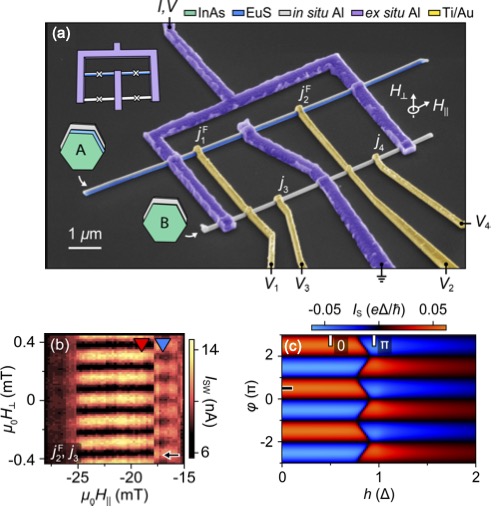Superconductor-ferromagnet hybrids have long been studied due to their exciting applications for superconducting spintronics. Recently, a new avenue has opened up by merging superconductor-ferromagnet structures with strongly spin-orbit coupled semiconductors. In our research, we are interested in exploring unconventional Josephson effects in these triple hybrid materials.
In our earlier work, a major focus has been on understanding how the spin-textures due to domains in the ferromagnet and the spin-orbit coupling in the semiconductor can lead to unconventional Josephson effects. To address this question, we have collaborated with experimentalists at the Niels Bohr Institute on triple-hybrid supercurrent interferometers and explained an observed supercurrent reversal transition in these devices that arises from the discrete flipping of EuS magnetic domains.
In our future research, we will focus on both the fundamental and applied aspects of superconductor-ferromagnetic-semiconductor triple-hybrid materials. We are especially interested in discovering unique transport properties related to the magnetic domain structures in triply-hybrid materials. Moreover, we will also explore the potential of triple-hybrid for creating double-Cooper pair tunneling elements. These unique Josephson elements could find future applications in novel superconducting qubit designs with intrinsic error-protection capabilities.

